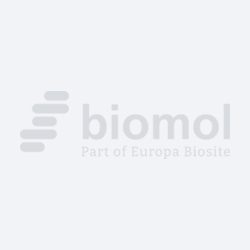Cookie preferences
This website uses cookies, which are necessary for the technical operation of the website and are always set. Other cookies, which increase the comfort when using this website, are used for direct advertising or to facilitate interaction with other websites and social networks, are only set with your consent.
Configuration
Technically required
These cookies are necessary for the basic functions of the shop.
"Allow all cookies" cookie
"Decline all cookies" cookie
CSRF token
Cookie preferences
Currency change
Customer-specific caching
FACT-Finder tracking
Individual prices
Selected shop
Session
Comfort functions
These cookies are used to make the shopping experience even more appealing, for example for the recognition of the visitor.
Note
Show the facebook fanpage in the right blod sidebar
Statistics & Tracking
Affiliate program
Conversion and usertracking via Google Tag Manager
Track device being used

If you have any questions, please use our Contact Form.
You can also order by e-mail: info@biomol.com
Larger quantity required? Request bulk
You can also order by e-mail: info@biomol.com
Larger quantity required? Request bulk
Blue substrate used in the detection of b-galactosidase in bacteria or phage as a selection agent... more
Product information "XGAL (X-Gal) (5-Bromo-4-chloro-3-indolyl-beta-D-galactoside (galactopyranoside))"
Blue substrate used in the detection of b-galactosidase in bacteria or phage as a selection agent for cloning experiments utilizing the lacZ vector. Colonies expressing b-galactosidase will appear blue in the presence of XGAL. Others will appear white. Gene Cloning: In gene cloning, X-gal is used as a visual indication of whether a cell expresses a functional beta-galactosidase enzyme in a technique called blue/white screening. This method of screening is a convenient way of distinguishing a successful cloning product from other unsuccessful ones., The blue/white screening method relies on the principle of alpha-complementation of the beta-galactosidase gene, where a fragment of the lacZ gene (lacZalpha) in the plasmid can complement another mutant lacZ gene (lacZDeltaM15) in the cell. Both genes by themselves produce non-functional peptides, however, when expressed together, as when a plasmid containing lacZalpha is transformed into a lacZDeltaM15 cells, they form a functional beta-galactosidase. The presence of an active beta-galactosidase may be detected when cells are grown in plates containing X-gal, the blue-colored product precipitated within cells resulted in the characteristic blue colonies. However, the multiple cloning site, where a gene of interest may be ligated into the plasmid vector, is located within the lacZalpha gene. Successful ligation therefore disrupts the lacZalpha gene, alpha-complementation is therefore also disrupted and no functional beta-galactosidase can form, resulting in white colonies. Cells containing successfully ligated insert can then be easily identified by its white coloration from the unsuccessful blue ones. Example of cloning vectors used for this test are pUC19, pBluescript, pGem-T Vectors, and it also requires the use of specific E. coli host strains such as DH5alpha which carries the mutant lacZDeltaM15 gene. Protein-protein Interactions: In two-hybrid analysis, beta-galactosidase may be used as a reporter to identify proteins that interact with each other. In this method, genome libraries may be screened for protein interaction using yeast or bacterial system. Where there is a successful interaction between proteins being screened, it will result to the binding of an activation domain to a promoter. If the promoter is linked to a lacZ gene, the production of beta-galactosidase, which results in the formation of blue-pigmented colonies in the presence of X-gal, will therefore indicate a successful interaction between proteins.[10] This technique may be limited to screening libraries of size of less than around 106.[10] The successful cleavage of X-gal also creates a noticeably foul odor due to the volatilization of indole. Synonyms: X-Gal, 5-Bromo-4-chloro-3-indolyl-b-D-galactoside (galactopyranoside), BCIG, CAS No: 7240-90-6, Molecular Formula: C14H15BrClNO6, Molecular Weight: 408.61, Appearance: White lyophilized powder, Purity (HPLC): >99%, Purity (TLC): Single Spot, Solubility: Soluble in DMF, Water (KF): <1%, Specific Rotation: -60º to -64º, Identity by I.R. or NMR: Conforms to structure, RNase, DNase or Proteases: None Detected, Quality Control (Blue-White Assay): [LacZ+]: Pale blue center/dense blue periphery, [LacZ-]: Faint blue center/white periphery, Storage and Stability: Store at -20°C. Stable for 6 months after receipt. Protect from light. Also Available: X1000-05: XGAL, 40mg/ml in DMF, Important Note: This product as supplied is intended for research use only, not for use in human, therapeutic or diagnostic applications without the expressed written authorization of United States Biological. Toxicity and Hazards: All products should be handled by qualified personnel only, trained in laboratory procedures.
| Supplier: | United States Biological |
| Supplier-Nr: | X1000 |
Properties
| MW: | 408.61 D |
| Formula: | C14H15BrClNO6 |
| Format: | Molecular Biology Grade |
Database Information
| CAS : | 7240-90-6| Matching products |
Handling & Safety
| Storage: | -20°C |
| Shipping: | +4°C (International: +4°C) |
Caution
Our products are for laboratory research use only: Not for administration to humans!
Our products are for laboratory research use only: Not for administration to humans!
You will get a certificate here
Viewed

